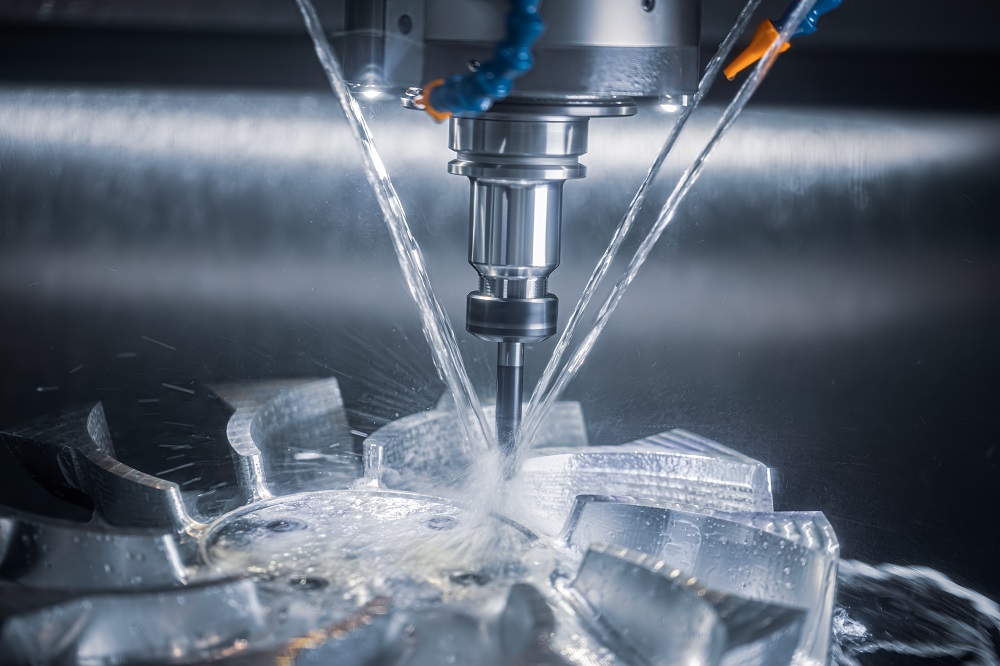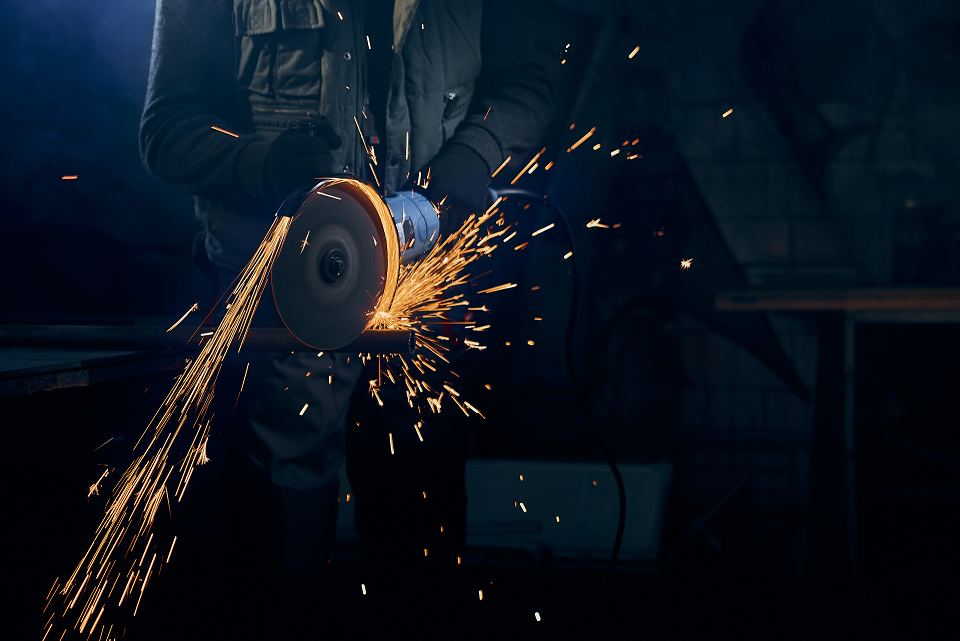Liquid filtration systems are used in a wide range of industrial applications, including chemical processing, metallurgy and any other applications that involve the removal of solid particles from liquids. However, these systems do not work the same for all applications.
Choosing the right filtration systems can ensure smooth production processes and make life easier for the ones working on the shop floor. To know which system works best for your application, it is important to analyze each system’s functions and the impurities each system can remove.
As a guide, we’ve outlined important factors to consider when choosing a coolant filtration system.
Continuous or Performed in Batches
Depending on the type of filtration required, companies may require the assistance of a company that specializes in filter applications to determine the right solution for batch or continuous processing of liquids. Filtration devices are divided into two categories depending on how they filter liquids:
– Continuous filtration devices are designed to allow for long periods of operation without a stop. This makes them a great choice for companies that run their operations for longer periods without stopping for cleaning or other adjustments.
– Batch filtration processes are designed for smaller-scale operations. These filtration options allow for more frequent cleaning or replacement of the filtering devices, which can sometimes lead to increased effectiveness of the cleaning process.
Characteristics of the Filtered Particles
How large/small are dirt particles in the liquid? Do these dirt particles affect the quality of liquid/coolant? What particle sizes are to be removed from the liquid during filtration?
These are important questions to know the answers to when deciding on an industrial filtration system. Different filtration systems use different approaches to filter different particles and may have limitations. For example, a system that is designed to filter large-sized particles would not be suitable for filtering finer particulates.
The process becomes tricky when taking into account all of the above questions. The need for customization becomes essential to achieve optimal results. For example, if the materials are hazardous, special equipment and installation methods may be required.
When selecting filters, don’t shy away from testing the solution with respective filtration providers. Tests help in accurately identifying the contents of the filtered materials and ensure a fool-proof filtration solution for your production assembly.
Filtration Options
Once you clearly understand the impurities present in the coolant, the next step is to choose the best method of filtration to filter them out and maintain the coolant. Filtration devices come in many different types, each of which is useful in specific industrial situations:
– Cartridge filtration: This efficient alternative to conventional high-pressure and reverse-flow filters removes ingressed contamination before it flows downward to sensitive components. These simple, modular filters block pump-generated debris before it gets to proportional valves. Being a high-pressure filter, it provides durability and high performance.
– Cyclonic filtration: This waste-free coolant filtration system removes particulates through centrifugal force. It eliminates the need for disposable paper or cartridge filters. Bubbles and foam are not produced. Contaminants, concentrated in the sludge pot, cannot return to the coolant tank once they are removed.
– Bag filtration: Relatively inexpensive and readily incorporated in machine tool applications, bag filters provide solutions for removing swarf, small chips, and various particulates. Unfiltered liquid enters the housing above the bag and passes down through it. Solids contained in the bag are easily removed when the unit is serviced. The fluid bypass is prevented because the outside diameter of the filter bag seals radially against the housing inside diameter. A single cover gasket seals the opening. Covers can be installed and removed without tools.
– Drum filtration: A drum rotates in a tub of liquid to be filtered. This filtration type prevents clogs in systems with slurries and liquids with high solid content.
– Magnetic filtration: This method is used to remove iron particles. A large magnet attracts and filters these particles from the system. It is suited to environments with ferrous, para-magnetic, and grinding medium issues.
– Coolant skimmers: This mechanical system separates oil or particulates floating on the surface of a liquid.
– Paper filtration: These systems cleanse various types of liquids (water, emulsions, aqueous solutions) of polluting solid particles. They can be used in machine tool markets as well as chemistry, food, painting, petrochemistry, glass, and industrial washing machine applications. Filtration models are possible for oil.
Conditions faced by filter
Another factor to consider is whether the filter chosen for the specific application will have to withstand certain special conditions present during the process. This will determine what filtration system is suitable for specific industrial applications.
Listed below are some of the conditions that should be considered when choosing a filter type:
– Flow rate is the amount of liquid that moves through a pipe. Flow rate is determined by using velocity, change in kinetic energy, temperature, the distance of flow, friction, viscosity and density of the liquid.
– Pressure: Pressure is an important element for filtration. High or low pressures can dictate which type of filtration system can be used. Some systems have minimum operating pressure requirements.
– Temperature: Some filtration systems have temperature limits. While some cannot perform under high heat, others are designed to withstand them.
Evaluating Total Costs
How often do bags or cartridges need to be replaced? Can the waste volumes be reduced by choosing a better filtration method? Can downtime be minimized?
These questions serve as the final straw for acquiring a new filtration system. Careful consideration when choosing a liquid filtration system can offer numerous potential benefits. It is crucial to consider the overall cost for all operations of the filtration system before making a purchase.
A wise filter selection can minimize process downtime; reduce disposal costs; limit worker exposure to the process liquid; reduce maintenance time and expense, and improve product quality. Therefore, it is important to review all the available filtration options and identify potential areas where adding or upgrading filtration can provide cost savings.
– Replacement costs: Filtration systems will require filter changes. The frequency may vary from filter to filter. However, if your filter is not lasting more than 5 months, it may be necessary to switch to a different material. Filtration companies provide alternative materials/ designs for filters that suit your budget. For example, the cost of replacing a bag filter is lesser than replacing a cartridge filter.
– Disposal costs: Disposal costs should also be considered in the overall cost of operations for the filter chosen for industrial use. The disposal of filters, machine parts and spares can be an expensive process. Combined with hazardous wastes, the chances of disposal costs exceeding the purchase price are high. Investigating disposal expenses will sometimes have to be the deciding factor in determining whether a particular filter is a right fit for your company.
– Maintenance costs and labor costs: To ensure smooth production processes, it is necessary to reduce downtime as much as possible. If downtime is high, the filtration system may end up eating up all the profits.
There are filtration options that clean the surface of the machine using the process of back-flushing. These self-cleaning coolant filtration solutions can help take some of the labour out of the process for all filter types.
Gather as much information and answers to your questions regarding various filtration options and how to determine the best options for your application. SE Coopermatics designers and other professional staff provide counsel and assistance as you select the right filtration solution to meet your specific application requirements.








